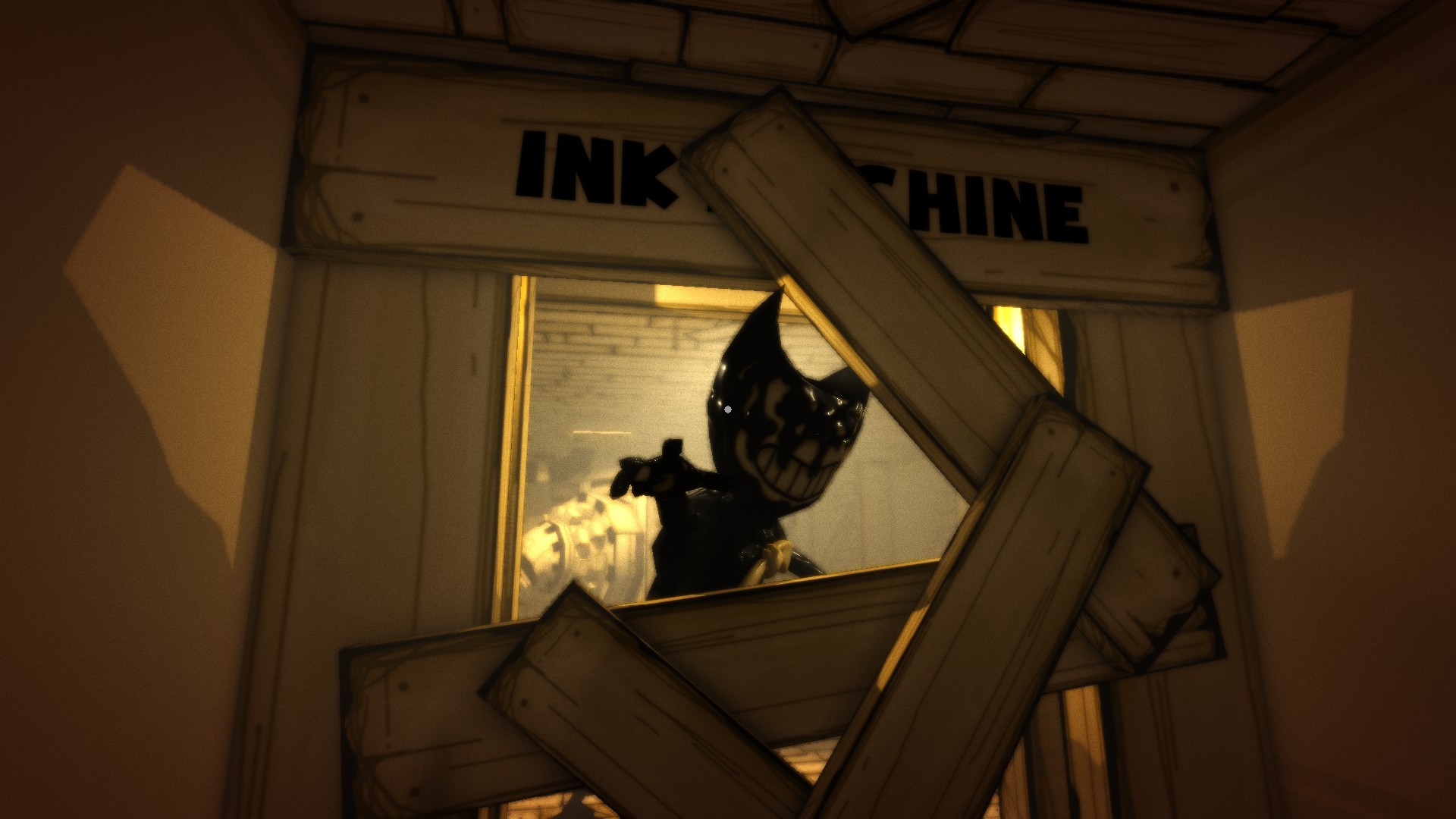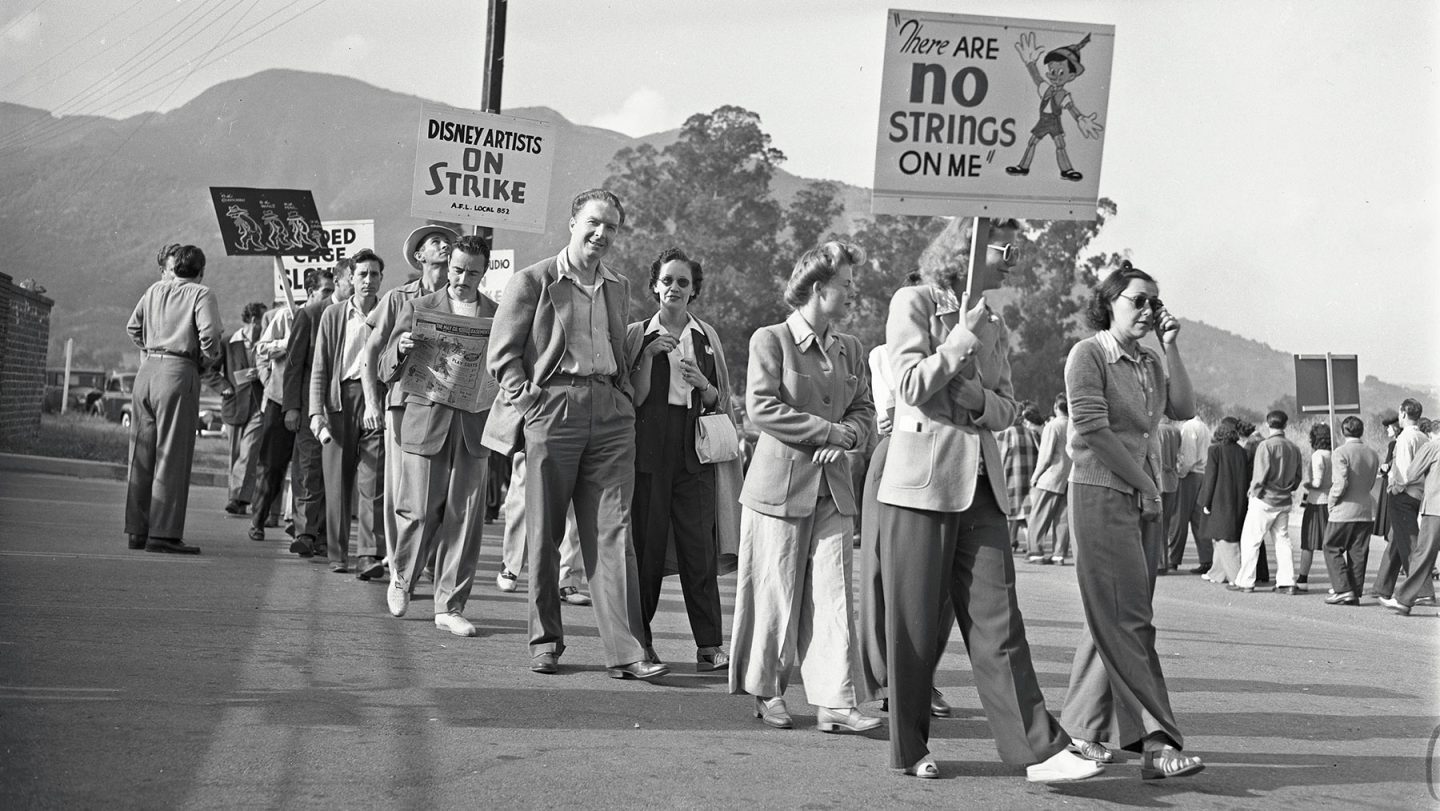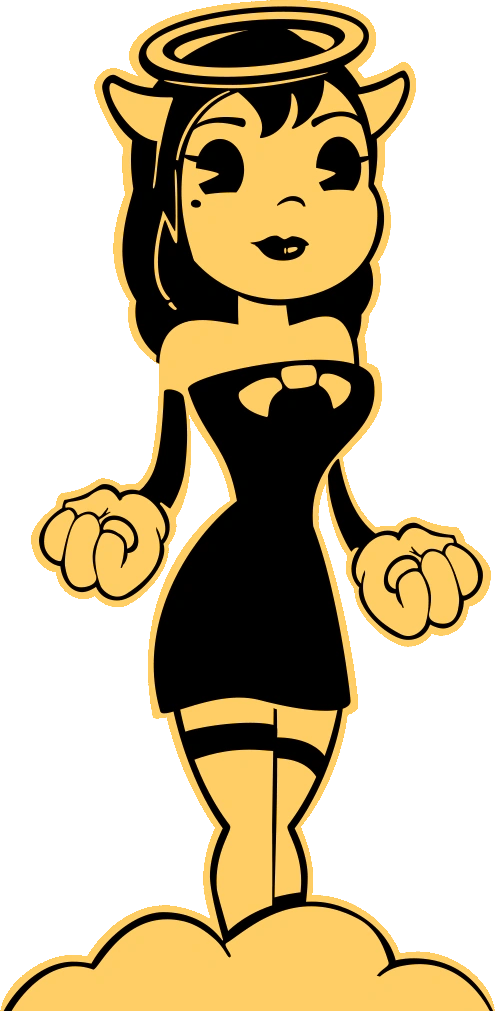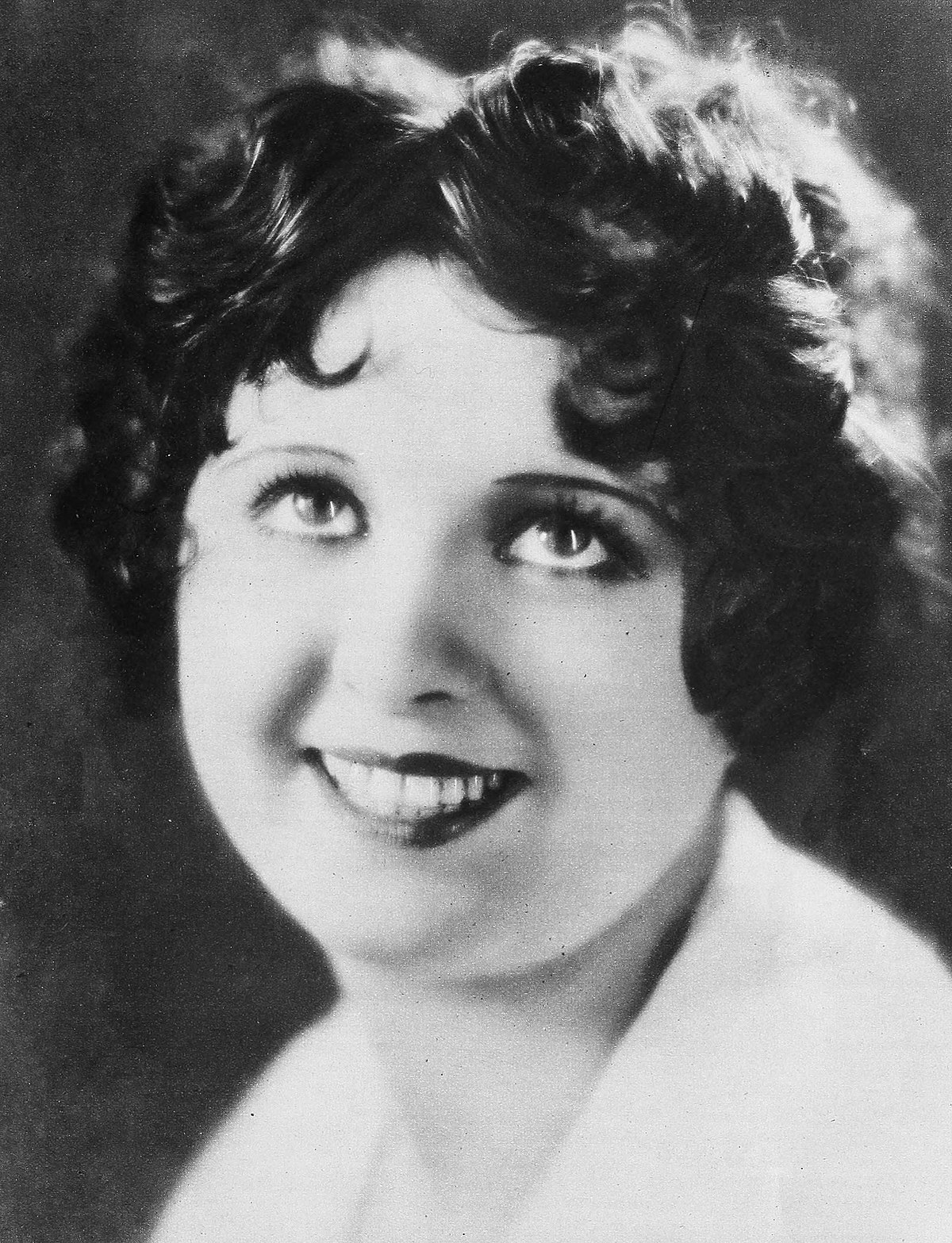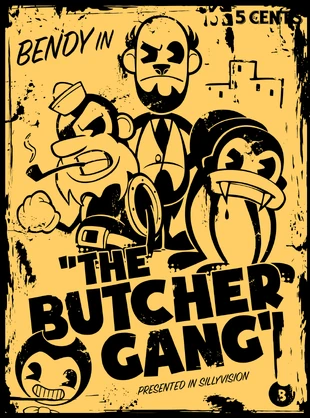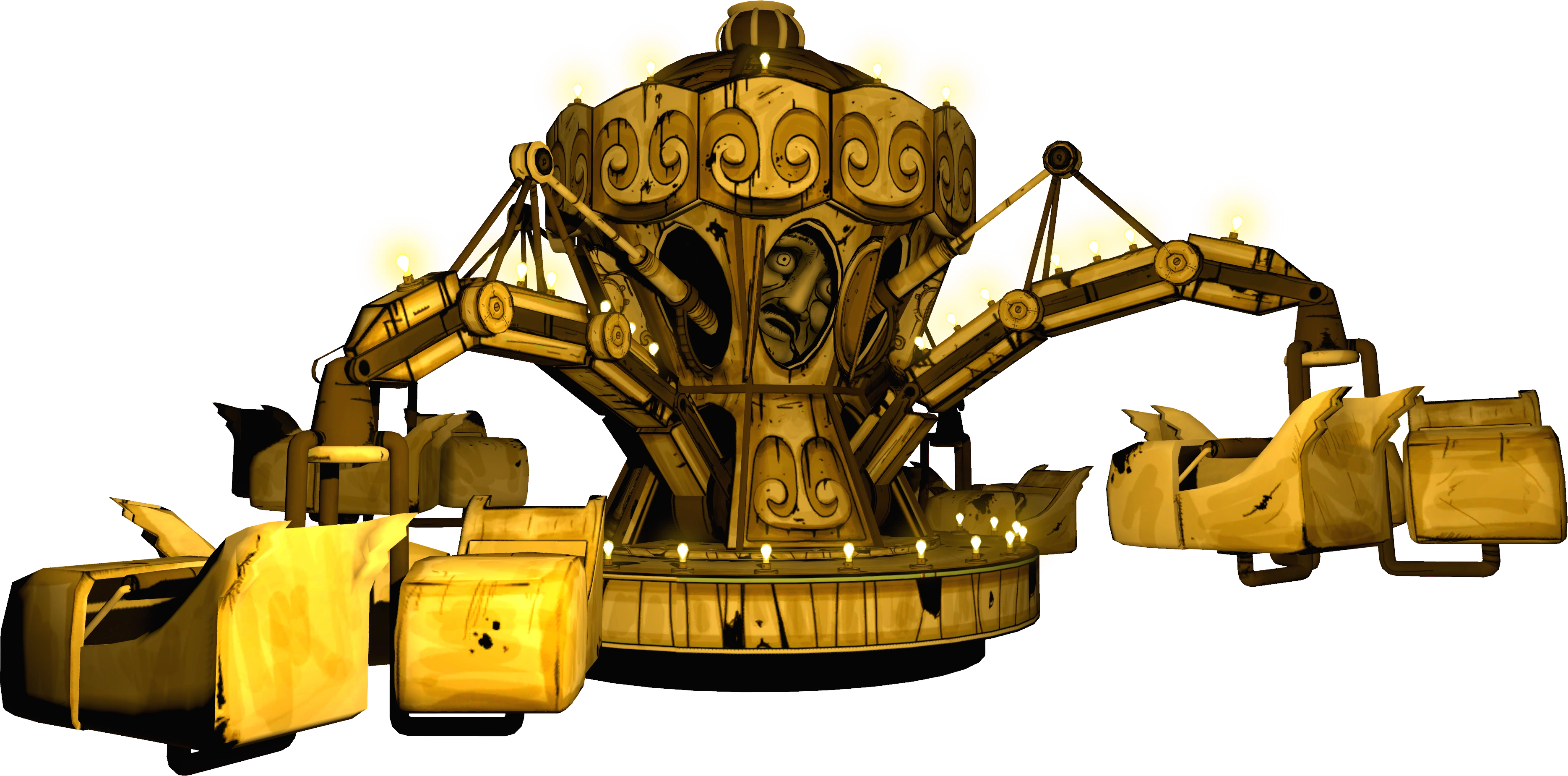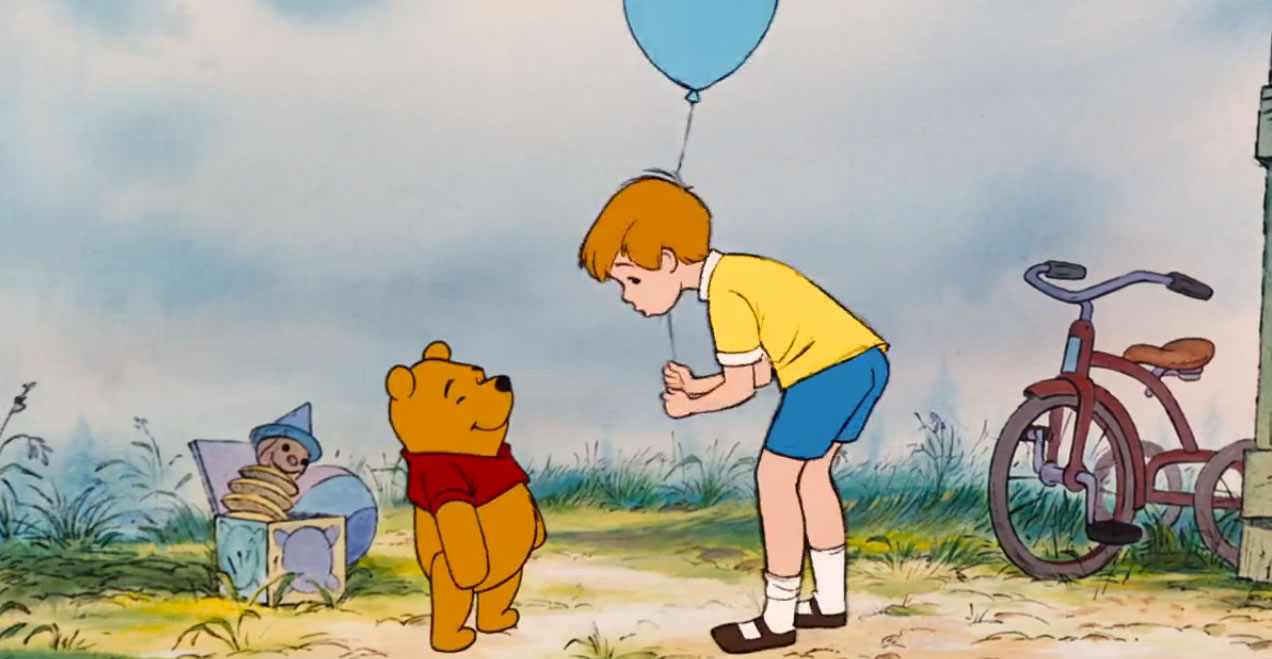Indie games
are becoming increasingly popular nowadays, particularly those of the horror
genre. And several appear to have been inspired in some form by Disney. Five Nights At Freddy’s involves haunted
animatronics in a rundown family diner, though this has a closer connection to
Chuck E. Cheese than Disney. And, then, you have such games as Cuphead and Bendy and the Ink Machine, which are based around cartoon
characters who have an animation style akin to that of the Golden Age of
Animation.
Henry soon
uncovers a disturbing underbelly of the studio he left behind. A humongous ink
machine stands in the studio, leaking out black ink all over the place. Oh, and
Joey may been involved in a satanic ritual of some kind that made the ink a
sentient hive mind, and could bring his cartoon characters to life possibly
using human hosts or cadavers. Bendy is running around as a hostile monster,
several members of the staff have become ink monsters, and the studio appears
to be made up of multiple underground levels, with each getting worse and worse
as Henry descends into Joey’s hell.
But, we
aren’t here to directly examine the lore of Bendy
– as fun as that may be. If you are a Disney and animation fan, you may notice
some similarities between the characters and story of the game, and actual
people and events in animation history. How Bendy resembles a multitude of
characters, the relationship between Henry, Joey, and the rest of the studio’s
staff, and even the strange cult aspects going on.
Joey Drew
appears to draw inspiration from two major figures in the early years of
animation: Walt Disney and Max Fleischer. Most people know Walt’s history, but
Max Fleischer has become sadly obscure in recent years. While most people
believe Walt invented such things as rotoscoping, and mixing live action with
animation, but Fleischer actually developed most techniques first. History and
word of mouth have twisted a lot of early animation history and giving Walt
Disney credit. This could be the inspiration for Joey Drew’s nasty habit of
taking credit for the creations of his staff.
Max
Fleischer invented rotoscoping back in 1914, which allowed live action footage
to be traced onto paper. This technique was later used in the first major
cartoon he and his brother Joe and Dave created – Out of the Inkwell. In this live action short, Max directly
interacts with his character Koko the Clown, who emerges from an inkwell,
escapes into the real world, before being shoved back into the animated world
by Fleischer. Now that sounds a little familiar. Joey Drew builds the ink
machine to bring his creations to life. Or to possibly cheat death if the
lore’s hints are anything to go by. Thus, Bendy and other characters are found
running around the studio, free of their 2D worlds, but still monstrous and
very leaky.
Ultimately,
the success of Disney created heavy competition for the Fleischer Studios
during the 1920s and 1930s. Of course, Disney created Mickey Mouse, Donald
Duck, and Goofy amongst others. Fleischer invented Koko the Clown, Bimbo, and
Betty Boop, as well as bringing Popeye and Superman to the big screen. Several
of these characters appear to have inspired by Bendy and co.
Throughout
the game, Henry comes across various tape recordings of the disgruntled staff,
describing Joey Drew as disorganized, backstabbing, secretive, and egocentric.
He focuses more on the ink machine than the cartoons or the welfare of his
employees. It is likely what led to Henry leaving the studio. This reflects
some real life events at both significant studios. Both Fleischer and Disney
encountered very public strikes by employees due to poor working conditions and
low pays. It shook both studio heads to their core, destroying the familial
relationships they had built with their employees. Though, in the case of Joey
Drew Studios, the employees suffered a fate worse than death.
So, Joey
Drew acts like he’s Willy Wonka, but is in fact a two-faced lair. And where
does that leave Henry? Well, he’s an unappreciated animator who left the
company, and Joey considered him a good friend regardless. That sounds a lot
like Ub Iwerks, Walt’s first hired animator, a close friend, and the co-creator
of Mickey Mouse. Yes, Mickey Mouse has a co-creator. In fact, Iwerks basically
created Mickey’s iconic look, while it was Walt’s wife Lillian Bounds who named
him. Henry left Joey Drew Studios thirty years prior to the events of the game,
but returned to the studio on Joey’s invite.
Iwerks
actually left Disney around 1930. Struggling to keep up with Walt’s demands and
harsh command, Iwerks felt unappreciated, despite being the source of much of
Disney’s success. Iwerks eventually formed his own studio, backed by Pat
Powers, former distributor of Disney’s cartoons. Unfortunately, his studio did
not last long. Iwerks would return to Disney in 1940 during the height of its
success, now working in the special effects department, helping in films and
Imagineering. But, unlike Iwerks returning to a studio in its prime, Henry
returns to a boarded up studio, with monstrous toons running amuck.
Joey Drew’s
characters and cartoons are presented in “Sillyvision”, which is likely a nod
to Silly Symphonies. Bendy is a
mischievous, grinning, dancing demon who served as the mascot of the studio. By
far, he appears to be the most successful and popular character. Looking at his
design, he immediately resembles the likes of Mickey Mouse or Felix the Cat, or
maybe even Oswald the Lucky Rabbit, Mickey’s big brother and Disney’s first
successful character.
But, Bendy
has a closer resemblance to one of Max Fleischer’s character – Bimbo, a cartoon
dog, who at first was a major star and competitive rival to Mickey. However,
the popularity of Betty Boop, and then the enforcement of the Hays Code in
1934, pushed Bimbo out of notoriety and into obscurity. Bimbo was a very
mischievous character, pulling pranks, chasing women, and being a bit of a
trickster. The animated shorts starring Bendy appear to take inspiration from
this. Bendy may have fallen in obscurity following the collapse of the studio,
mirroring Bimbo’s fate.
Boris the
Wolf is Bendy’s sitcom arch nemesis in his shorts, but also proved to be a
popular character. His role is likely a nod to Pegleg Pete, the long-time enemy
to Mickey, Donald, and Goofy. Pete is actually an older character than Mickey,
and even Oswald, first appearing in Walt’s Alice
Comedies. Boris also resembles such characters as Goofy or Horace
Horsecollar. He could also take inspiration from Koko the Clown, who appeared
in numerous shorts with Bimbo.
And then we
have Alice Angel. It’s kind of obvious who she is based on – Betty Boop, the
most successful character from Fleischer Studios. Their design is quite
similar, a pretty, dark-haired girl dressed in a tight, halter top skirt. Betty
started off as a supporting character in Bimbo’s shorts, and was actually an
anthropomorphic poodle, before being reimagined as a human. Betty was
considered to be gorgeous and became a sex icon in the 1930s. Both Betty and
Alice serve as the love interests to Bimbo and Bendy.
However, as
history shows, Betty became hugely popular and sent Bimbo to the doghouse.
Alice was predicted to outshine Bendy in terms of popularity. According to one
character in the game, who designs the toys, Alice apparently wasn’t as popular
as Joey had hoped, due to disappointing sales in her toyline. Betty Boop went
through several voice actresses in the space of about five years, including
Margie Hines and Mae Questel. Bendy
seems to take note of this, and add an extra layer of drama too it.
Well,
nothing like that happened in real life. No voice actress of Betty Boop went
bat shit insane and tried to become the character. Instead, an actress tried to
sue Fleischer Studios for copying her appearance and distinct voice. Helen Kane
was said to have been the inspiration for Betty Boop. You’d think most people
would be flattered to be immortalised in animation, but not Kane, who instead
sued the studio $250,000 for infringement. Apparently Betty’s success ruined
Kane’s career, even though it was essentially declining at the time anyway.
It turns
out Kane in turn may have got her look from another actress named Clara Bow.
The Fleischers, meanwhile, claimed Betty was created purely from scratch
without inspiration. Kane also claimed her distinct singing style was her own.
But, a recording of an African American performer, Esther Jones, had sung in a
similar tone years before, and Kane had witnessed it. This led to her lawsuit
being thrown out.
Betty was
censored in 1934 by the Hays Code, which was designed to make cartoons more
decent for audiences. This involved toning down Betty’s sex appeal, making her
more of a housewife. Bimbo’s fall into obscurity was also caused by the code,
since a dog being in a romantic relationship with a human rubbed people the
wrong way. In the world of Bendy, it
is possible Joey’s studio fell victim to the code’s censorships. Bendy is a
demonic entity, while Alice was both a sex symbol and a devilish character.
Chapter 3
introduces a trio of additional characters from Bendy’s cartoons called the
Butcher Gang, who appeared to be antagonists to Bendy. They were Charley the
Chimp, Barley the Pirate, and Edgar the Spider. Barley, in particular, bares a
striking resemblance to Popeye, another of Fleischer’s most popular and
recognised characters.
Interestingly,
in each chapter, we see a progressive step for the studios. In the first
chapter, the player can view silent projections of Bendy shorts. The second
chapter is set in the music department, introducing sound to the cartoons. The
third reveals the studio had its own toy manufacturing plant called Heavenly
Toys, showing the mass marketing and production of Bendy and co. Then, the most
recent fourth chapter shows that Joey even had plans to make a fully-fledged
theme park called Bendy Land. Anyone else getting Disneyland vibes?
Now,
Disneyland was built by many talented designers, engineers, artists,
carpenters, and all under Walt’s guiding hand. It was no easy task getting the
theme park built. Bertrum Piedmont could be inspired by several figures in the
amusement park industry. There isn’t really anyone that fits the description of
a resentful, bitter attraction designer though. Bertrum could be inspired by
Walter Knott, founder of Knott’s’ Berry Farm, which just happened to be down
the road from where Disneyland would be built. Yeah, a theme park close to Anaheim,
opened by a man named Walter. Weird, huh. But, yeah, Knott opened his park,
initially a berry stand, many years before Disneyland was even conceived. Both
Walts were in fact friends, and Disneyland took some inspiration from the Berry
Farm.
Another
possible source of inspiration is Wendell “Bud” Hurlbut, a prominent and early
designer of theme park attractions. He helped put Knott’s on the map by helping
to change it from a chicken farm into a theme park. Hurlbut would design the
Calico Mine Train, and a replica of the Liberty Bell, which he gave to Knott
when he built a full scale replica of Independence Hall. Though Hurlbut had no
involvement in Disneyland, Walt would often visit him for ideas and to share
his own. And again, there was no conflict between them.
Wood came
off as quite arrogant, later describing himself as “The Master Planner of
Disneyland”, whilst trying to design other theme parks. Wood was fired less
than a year after he was hired, and erased from Disney’s history books as
having any involvement with Disneyland’s creation. Now, does that ring any
bells? This seems to match up quite nicely with Bertrum’s character, with some
tweaks. Wood named himself the mastermind behind Disneyland, when in fact Walt
was. Joey took credit for Bertrum’s work, enraging the architect, so the
situation is reversed here.
And what
about the creepy cult within Joey’s studio. Characters literally worship Bendy
as a god and saviour, painting the walls with words like, “He will set us
free!”. Sammy Lawrence, the former music director of the Bendy cartoons, fell
victim to the ink machine and now worships Bendy. In the second chapter, Sammy
takes Henry prisoner with the plan on sacrificing him to Bendy, in the hope
that his humanity can be restored. Bendy doesn’t seem to take kindly to his
creator being murdered, despite being openly hostile to him throughout the
first three chapters of the game, and instead massacres Sammy.
In the
short, Bimbo falls down a manhole cover, and is locked within by noneother than
a cackling Mickey Mouse. How did they get away with that? It was no secret that
Fleischer resented Disney for stealing his thunder, often referring to Walt as
“that son of a bitch”, as described in his memoirs. Bimbo lands in the lair of
a secret society, who repeatedly ask him if he wants to join up. He eventually
agrees to join when the cult’s leader turns out to be Betty Boop, and all of
the members rip off their disguises, revealed to be clones of Betty. Seems like
Bendy took some inspiration from here
too. Alice Angel, on her path to perfection, created endless clones of Boris in
order to make “pure”.
In one
final connection to history, one of Bendy’s cartoons, “Tombstone Picnic”,
appears to take direct reference from The
Skeleton Dance, the first of the Silly
Symphonies, and a cartoon entirely animated and storyboarded by Ub Iwerks.

